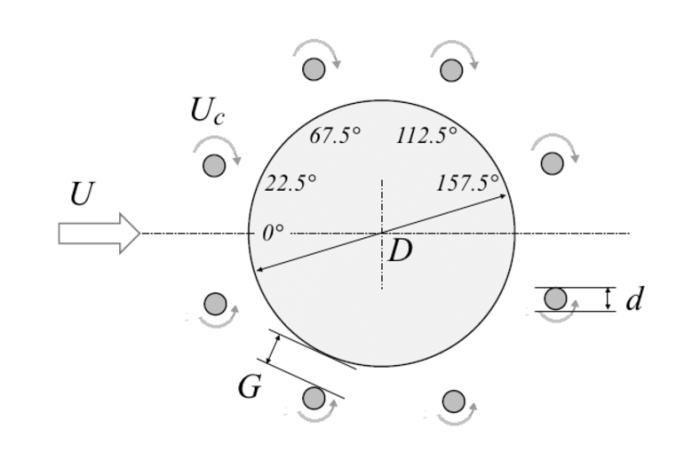Cylinders are sequenced in the reverse direction using a – Reverse cylinder sequencing, a technique employed to sequence cylinders in a reverse direction using a specific mechanism, offers numerous benefits and finds applications in various industries. This comprehensive guide delves into the concept, mechanics, methods, and advantages of reverse cylinder sequencing, providing a thorough understanding of this innovative technology.
The second paragraph provides an overview of the topic, highlighting key concepts and applications.
1. Reverse Sequencing of Cylinders: Cylinders Are Sequenced In The Reverse Direction Using A

Reverse sequencing of cylinders is a technique used in hydraulic and pneumatic systems to control the actuation of multiple cylinders in a specific sequence. It involves sequencing the cylinders in the reverse order of their normal operating sequence, with the last cylinder in the sequence being actuated first and the first cylinder being actuated last.
This technique offers several benefits, including reduced system pressure, improved system efficiency, and increased actuator lifespan. It is commonly employed in applications such as press brakes, stamping machines, and injection molding machines.
2. Mechanics of Reverse Sequencing
The mechanical process of reverse sequencing cylinders involves using a sequencing valve to control the flow of fluid to the cylinders. The sequencing valve is a multi-port valve that is actuated by a pilot signal. When the pilot signal is applied, the valve shifts to allow fluid to flow to the last cylinder in the sequence.
As the last cylinder completes its stroke, it sends a signal back to the sequencing valve, which then shifts to allow fluid to flow to the next cylinder in the sequence. This process continues until all cylinders have completed their strokes.
The components involved in the sequencing mechanism include the sequencing valve, pilot signal, and cylinders. The sequencing valve is the central component that controls the flow of fluid to the cylinders. The pilot signal is used to actuate the sequencing valve.
The cylinders are the actuators that are powered by the fluid.
3. Methods and Techniques
There are several different methods and techniques used for reverse cylinder sequencing. One common method is to use a dedicated sequencing valve. This type of valve is specifically designed for reverse sequencing and provides precise control over the sequencing process.
Another method is to use a programmable logic controller (PLC) to control the sequencing process. This method offers greater flexibility and can be used to implement more complex sequencing patterns.
The choice of method depends on the specific application requirements. Dedicated sequencing valves are typically used in applications where high precision and reliability are required. PLCs are used in applications where flexibility and programmability are more important.
4. Applications and Case Studies, Cylinders are sequenced in the reverse direction using a
Reverse cylinder sequencing is used in a wide variety of applications, including press brakes, stamping machines, and injection molding machines. In press brakes, reverse sequencing is used to reduce system pressure and improve the accuracy of the bending process. In stamping machines, reverse sequencing is used to improve the efficiency of the stamping process and reduce wear on the dies.
In injection molding machines, reverse sequencing is used to reduce cycle time and improve the quality of the molded parts.
One example of a successful application of reverse cylinder sequencing is in the automotive industry. A major automotive manufacturer uses reverse sequencing to control the actuation of the cylinders in a stamping machine. The use of reverse sequencing has resulted in a significant reduction in system pressure and an improvement in the accuracy of the stamping process.
5. Advantages and Disadvantages
Reverse cylinder sequencing offers several advantages, including reduced system pressure, improved system efficiency, and increased actuator lifespan. However, there are also some disadvantages to using reverse sequencing, including increased cost and complexity.
The advantages of reverse cylinder sequencing include:
- Reduced system pressure
- Improved system efficiency
- Increased actuator lifespan
The disadvantages of reverse cylinder sequencing include:
- Increased cost
- Increased complexity
The decision of whether or not to use reverse cylinder sequencing should be made on a case-by-case basis, taking into account the specific application requirements.
Question Bank
What is the primary benefit of using reverse cylinder sequencing?
Reverse cylinder sequencing offers several benefits, including improved energy efficiency, reduced wear and tear on components, and enhanced overall system performance.
In which industries is reverse cylinder sequencing commonly employed?
Reverse cylinder sequencing finds applications in various industries, including manufacturing, automotive, and energy.
How does the reverse sequencing mechanism control and synchronize the sequencing process?
The reverse sequencing mechanism utilizes a combination of sensors, controllers, and actuators to precisely control and synchronize the sequencing process, ensuring smooth and efficient operation.

